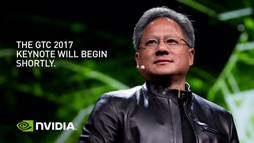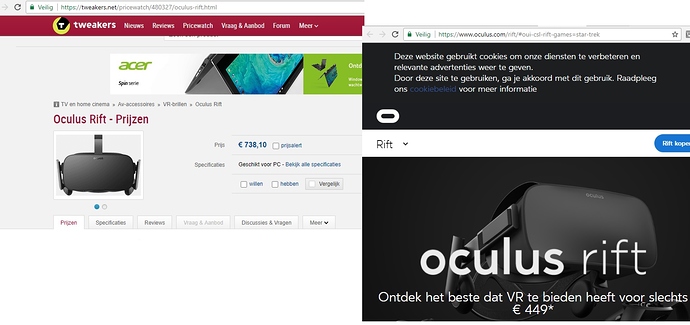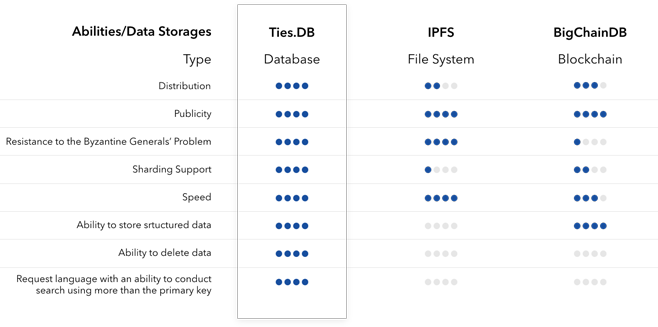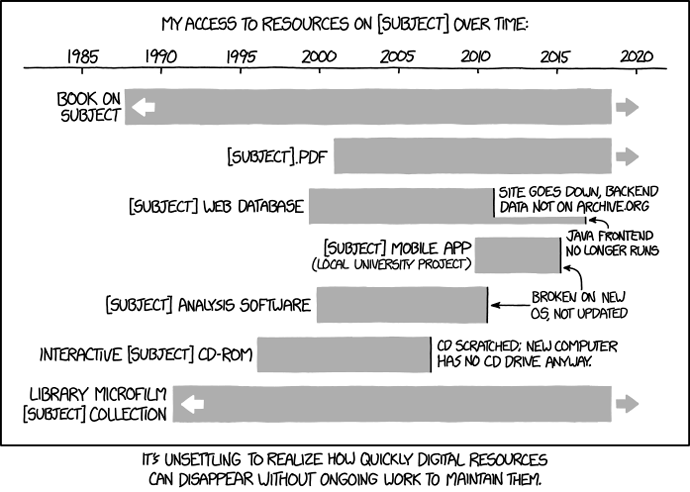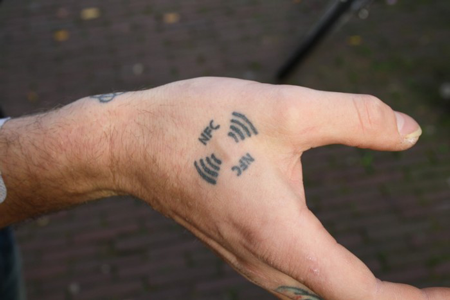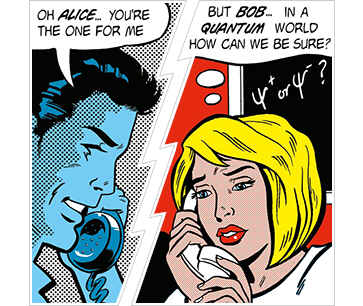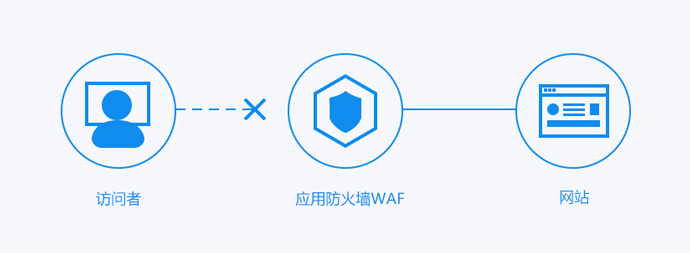Kuch. Nou moet ik wel? Kwestie van behendig internetten …
Allereerst, er is weer een Chaos Computer Club Congres gaande, dit keer in Leipzig.
Daarvandaan eerder vanavond een stream laten lopen, presentatie van een NL-er:
Social Cooling
Tijmen Schep is a technology critic and privacy designer.
He researchers how the rise of the data-driven reputation economy is stimulating a culture of self-censorship and risk avoidance. How do we help the wider audience to not just understand the issue, but offer them a way out?
Schep proposes to take the comparison of data to oil to its logical conclusion: if oil lead to global warming, then data leads to “Social Cooling”.
Voor een dergelijk onderwerp vast wel een ‘highbrow’ toontje aanslaan zeker maar nee, kalm voorgedragen.
Virtuoso. De voorgaande dagen net als jij daar ook omheen lopen draaien, voorlopig onder “Toekomstmuzak” gerubriceerd - de grondlegger ervan ziet het licht:
Getting from Open Data to a Semantic Web of Linked Data, with Virtuoso
Verspreidt het woord via Twitter:
Data de-silo-fication & #REST-ful interaction via open standards is basically the #WebWeWant. #SemanticWeb #LinkedData #BigData #OpenData
Of in een van zijn blog-afleveringen:
What is Linked Data, really?
Linked Data is simply hypermedia-based structured data.
Linked Data offers everyone a Web-scale, Enterprise-grade mechanism for platform-independent creation, curation, access, and integration of data.
Je kent dat wel, voor je het weet ben je in zijn fuik gezogen, hoofdpijn:
The fundamental steps to creating Linked Data are as follows:
-
Choose a Name Reference Mechanism — i.e., URIs.
-
Choose a Data Model with which to Structure your Data — minimally, you need a model which clearly distinguishes
a. Subjects (also known as Entities)
b. Subject Attributes (also known as Entity Attributes), and
c. Attribute Values (also known as Subject Attribute Values or Entity Attribute Values).
-
Choose one or more Data Representation Syntaxes (also called Markup Languages or Data Formats) to use when creating Resources with Content based on your chosen Data Model. Some Syntaxes in common use today are HTML+RDFa, N3, Turtle, RDF/XML, TriX, XRDS, GData, and OData; there are many others.
-
Choose a URI Scheme that facilitates binding Referenced Names to the Resources which will carry your Content – your Structured Data.
-
Create Structured Data by using your chosen Name Reference Mechanism, your chosen Data Model, and your chosen Data Representation Syntax, as follows:
a. Identify Subject(s) using Resolvable URI(s).
b. Identify Subject Attribute(s) using Resolvable URI(s).
c. Assign Attribute Values to Subject Attributes.
These Values may be either Literals (e.g., STRINGs, BLOBs) or Resolvable URIs.
En je giechelend nog naroepen:
You can create Linked Data (hypermedia-based data representations) Resources from or for many things. Examples include: personal profiles, calendars, address books, blogs, photo albums; there are many, many more.
Maar ja, je moet wat. Een voorname MaidSafe-adept heeft geluncht met ‘TimBL’ en nu is het voorzichtig onderzoeken geblazen, of er wat met het Solid van Berners-Lee moet:
Synergy - Project SOLID and SAFEnetwork
“The databrowser apps are stored on the server a the beginning of the day, but they are client side apps. All the code runs on the client. Server is as dumb as possible but no dumber. IE the solid world grows from new client-side app code, not new server-side code in the medium-long term.”
Halleluja, op naar decentralisatie dus, een server ergens voor draaien doen we niet meer.
In dat verband wordt er van daaruit bijvoorbeeld ook weer gelinkt naar deze dokieli-editor:
Write and publish
dokieli is a clientside editor for decentralised article publishing, annotations and social interactions.
dokieli articles and annotations are completely decentralised! This means that authors can publish where they choose, and we have no central servers to monitor or control your content or the interactions of your readers.
Simply add the dokieli CSS and JavaScript to any HTML page to immediately add in-browser editing and annotations.
Precies waar wij het kortgeleden nog over hadden:
dokieli enables the Write dimension of the Read-Write Web
Toverwoord, ‘Personal storage’:
In order to edit articles in the browser and save directly to server storage, as well as grant access to collaborators to edit, dokieli complies with the Solid protocol, based on the Linked Data Platform W3C standard. This is essentially a REST API for reading and writing Linked Data.
Solid includes identity through WebID, access control through Web Access Control, and other enhancements for decentralised personal data management.
Met zonder server-opslag als het even kan, dat is waar ‘Safe’ van MaidSafe eventueel iets kan betekenen:
You can sign up for a demo personal datastore at databox, install an existing server implementation, or even make your own server implementation from the spec. Once you have this, you can store dokieli articles there, privately or publicly (or limited access to others with WebIDs), as well as use this space for replies and notifications (and data generated by other Solid apps).
Een van de ‘contributors’ aan “dokieli” is:
Kingsley Uyi Idehen, Founder, President, and CEO of OpenLink Software, a privately held company founded in 1992.
Daarmee is de cirkel weer rond, ‘Powered by’ zijn ‘Virtuoso’:
About OpenLink Virtuoso
Conceptually, Virtuoso provides a “Data Junction Box” that drives enterprise and individual agility by deriving a Semantic Web of Linked Data from existing data silos.




